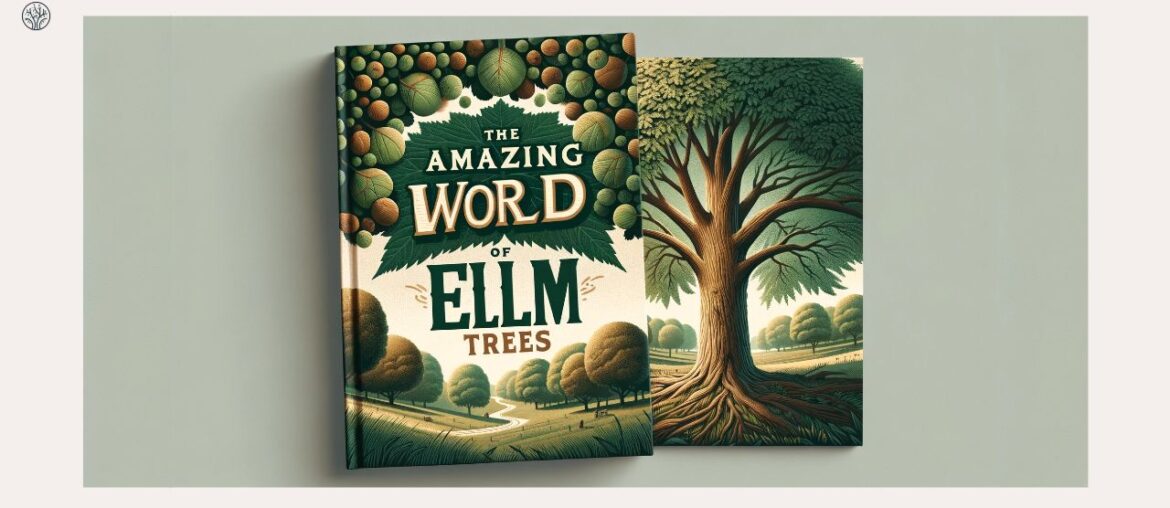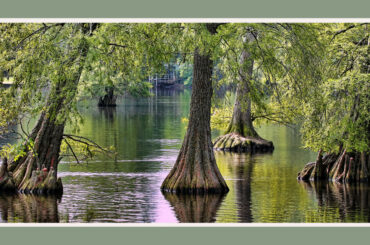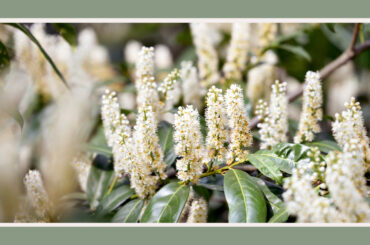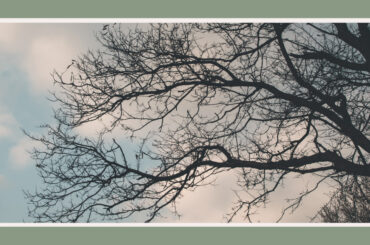Is an elm tree an evergreen?
The quick answer is no. Elm trees are a group of deciduous and semi-deciduous trees that belong to the genus Ulmus.
This article will give you a detailed explanation of this question. Besides learning about elm species and their characteristics, we will also explore their uses and benefits. So, stay tuned and dive into the world of vast nature!
- Elm Trees: Deciduous or Evergreen
- Popular Elm Species and Their Characteristics
- Golden Elm (Ulmus glabra ‘Lutescens’)
- Weeping Elm (Ulmus glabra ‘camperdownii’)
- Chinese Elm (Ulmus parvifolia)
- Japanese Elm (Zelkova serrata)
- Autumn Gold (Ulmus Sapporo)
- American Elm (Ulmus americana)
- Camperdown Elm (Ulmus glabra ‘Camperdownii’)
- Cedar Elm (Ulmus crassifolia)
- Cherry-Bark Elm (Ulmus villosa)
- David Elm (Ulmus davidiana)
- English Elm (Ulmus procera)
- European White Elm (Ulmus laevis)
- Siberian Elm (Ulmus pumila)
- Slippery Elm (Ulmus rubra)
- Uses of Elm Trees
- FAQs
Elm Trees: Deciduous or Evergreen
An evergreen tree keeps leaves or needles throughout the year and does not shed them seasonally. We can find evergreen trees in many climates and regions, but they are widespread in tropical and cold areas. Some examples of evergreen trees are pines, firs, spruces, cedars, eucalyptus, and magnolias.
A deciduous tree is a type of tree that loses its leaves seasonally, usually in autumn. Deciduous trees have some benefits over evergreen trees, such as avoiding frost damage, reducing water loss, and attracting pollinators with their flowers. Some examples of deciduous trees are maples, birches, oaks, and beeches.
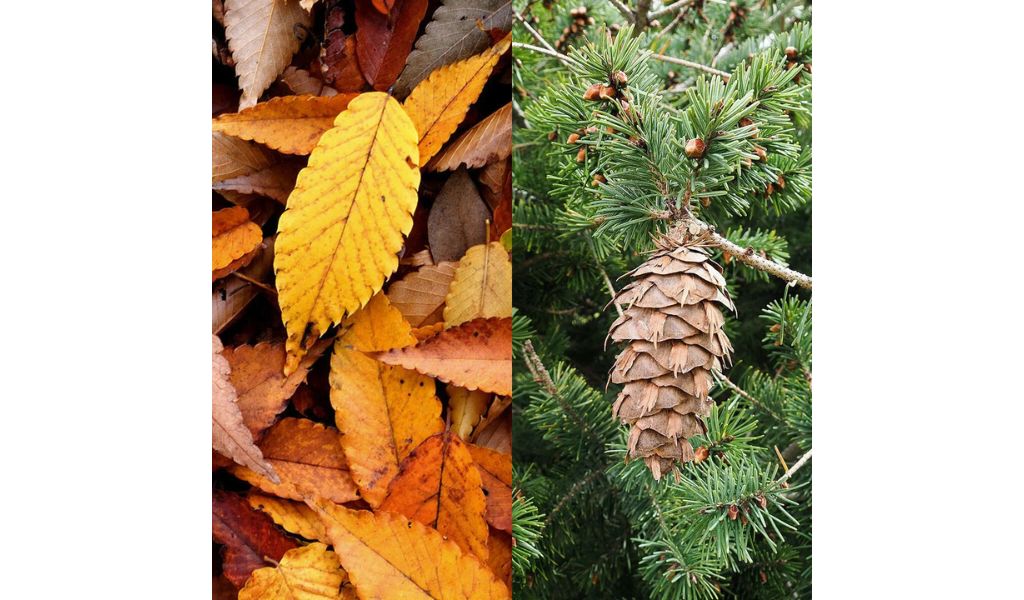
Meanwhile, semi-deciduous trees are those that lose some or all of their leaves for a short time, usually in late winter or early spring. They are usually found in regions that have mild winters and dry summers or in areas that have variable climatic conditions. Semi-deciduous trees have a partial dormant period, and they shed their leaves partially and asynchronously.
When observing any elm tree, you will see they lose some or all of their leaves for a short period, depending on the species and the climate. Therefore, the answer to the question: is an elm tree an evergreen is no. Elm trees are not entirely evergreen or deciduous. Most of them are semi-deciduous, while some are deciduous.
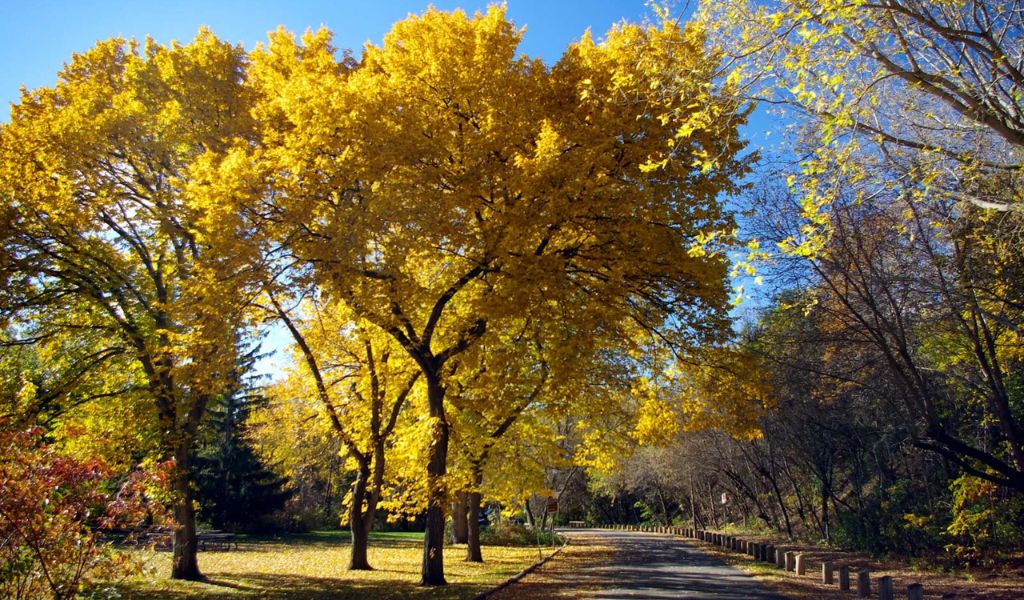
Elm trees are semi-deciduous because they have adapted to different environmental conditions. Some elm species lose all of their leaves for a few weeks or months, while others only lose some of their leaves from one side of the tree at a time.
Further, some elm species retain their leaves until the new ones emerge, while others drop their leaves before the new ones appear. The timing and extent of leaf shedding depend on various factors, including temperature, rainfall, sunlight, and soil moisture.
Popular Elm Species and Their Characteristics
There are about 30 to 40 species of elm trees worldwide, and they vary in size, shape, color, and growth habit. Some of the most common and popular elm species are:
Golden Elm (Ulmus glabra ‘Lutescens’)
The golden elm is a cultivar of the wych elm, native to Europe and Asia. It is a large and graceful tree that can grow up to 30 m (98 ft) tall and 15 m (49 ft) wide, with an equal weight of 750kg – such an impressive mass!
These trees have rounded crowns and spreading branches. Their oval-shaped leaves are green in summer and turn golden yellow in autumn. They produce small reddish flowers in spring, followed by winged seeds from the wind.
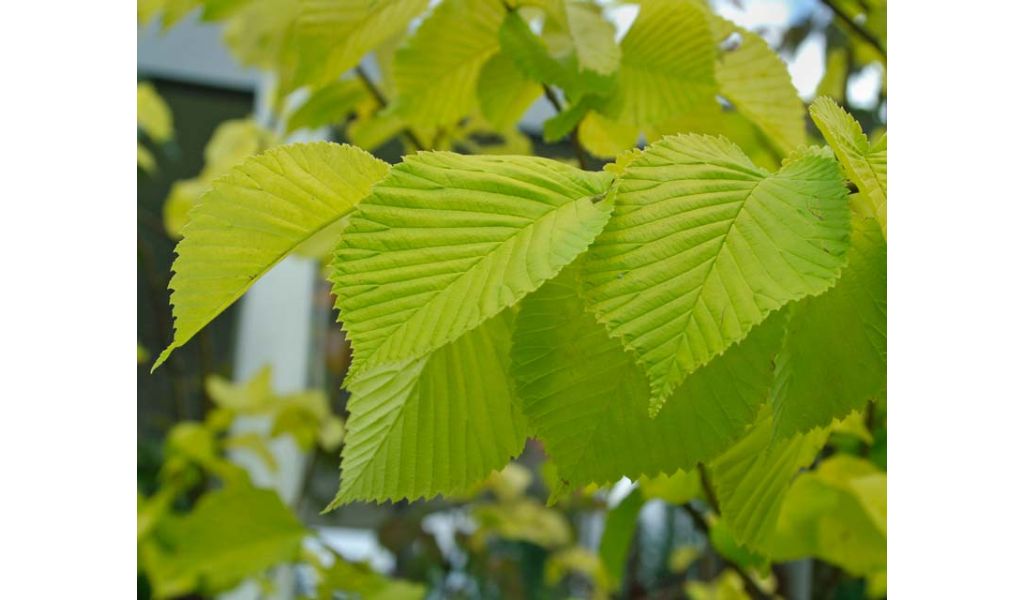
The golden elm is a deciduous tree that loses all its leaves in winter. It is resistant to Dutch elm disease and tolerant of urban pollution. This species is suitable for parks, gardens, and avenues.
Weeping Elm (Ulmus glabra ‘camperdownii’)
The weeping elm, a variation of the wych elm, originally hails from Europe and Asia. This small and decorative tree can reach heights and widths of up to 10 meters (33 feet). Its unique features include a rounded canopy and branches that gracefully droop down.
During the summer, the weeping elm boasts sizable oval leaves in a deep shade of green, which transform into a vibrant yellow come autumn. In the spring, it adorns itself with small reddish blooms, giving way to winged seeds that catch the wind for dispersal.
As a deciduous tree, it sheds all its leaves in the winter season. To keep its form, the weeping elm requires regular pruning and demands attention to avoid Dutch elm disease. This elegant tree is suitable for lawns, on patios, and even in containers, giving a touch of natural beauty to your surroundings.
Chinese Elm (Ulmus parvifolia)
The Chinese elm is a native of China, Japan, Korea, and Vietnam. It is a medium-sized tree that can grow up to 25 m (82 ft) tall and 18 m (59 ft) wide. It has a vase-shaped crown and arching branches. This species has small oval-shaped leaves that are dark green in summer and turn yellow, orange, or red in autumn.
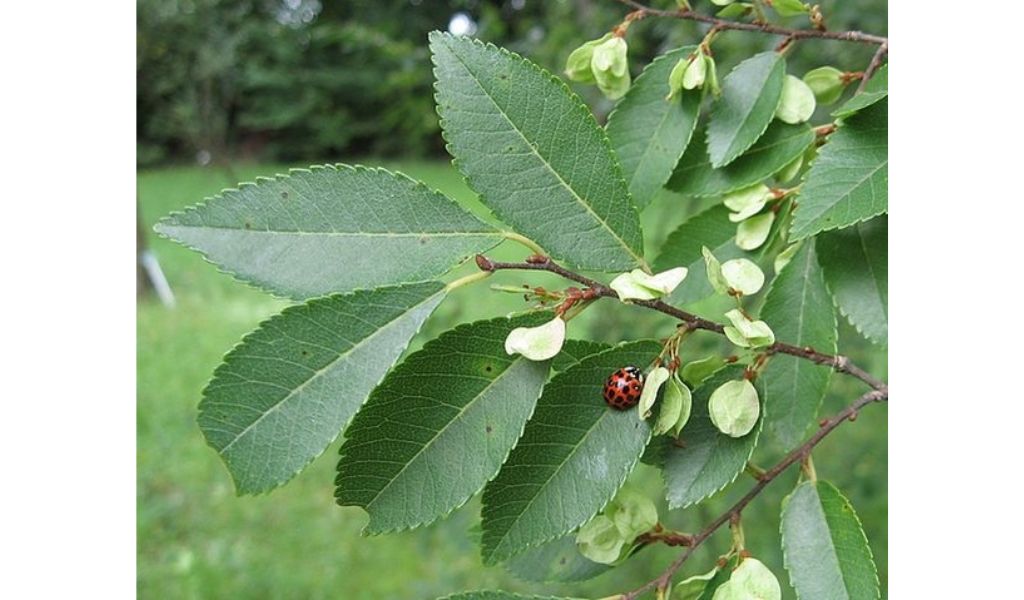
This Chinese elm is a semi-deciduous tree that loses some or all of its leaves in winter. It is resistant to Dutch elm disease and tolerant of drought, heat, and salt. Many choose to use them as bonsai, hedges, and street trees.
Japanese Elm (Zelkova serrata)
The Japanese Elm, known as Zelkova serrata, is not an evergreen but a deciduous tree. It sheds its leaves in the autumn and remains leafless during the winter.
The tree has a smooth, grey bark that may exfoliate in older trees, revealing a rich orange-brown underlayer. Its leaves are ovate with serrated margins, hence the name “serrata.” These leaves turn a stunning array of colors, from yellow to reddish-purple, in the fall.
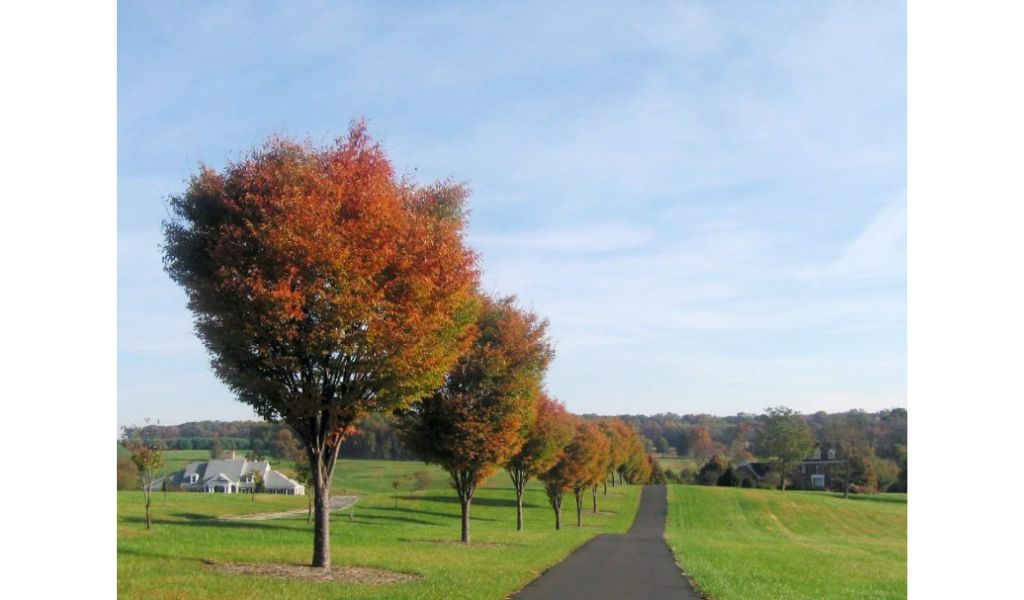
Native to Japan, Korea, and Taiwan, this tree enjoys a temperate climate. It’s highly regarded for its resilience, as it’s adaptable to various soil types and urban settings. Growing to heights of 60 to 100 feet, the Japanese Elm forms a rounded crown, making it a favored choice for city parks and streetscapes.
Apart from its aesthetic appeal, people have traditionally used the wood of Zelkova serrata for furniture and tool-making. Furthermore, due to its resistance to Dutch Elm disease, many often recommend it as a replacement for the American Elm in urban environments.
Autumn Gold (Ulmus Sapporo)
Autumn Gold, or Ulmus Sapporo, is a deciduous tree known for its brilliant fall colors. It stands out in landscapes with its golden-yellow leaves when autumn arrives.
This species has a dense, rounded canopy with dark green foliage throughout the growing season. The leaves are elliptical and have finely toothed edges. As the name suggests, one of its most impressive features is the transformation of its foliage to radiant gold during the fall season.
The Autumn Gold Elm is a hardy tree tolerant of urban conditions and various soil types. Typically, it grows to a moderate height, often reaching between 40 to 50 feet, making it suitable for both urban and suburban landscapes. Because of its compact size and robust nature, it’s an excellent choice for urban streets, parks, and residential areas.
American Elm (Ulmus americana)
The American Elm, or Ulmus americana, is a deciduous tree loved for its majestic appearance and grand, spreading canopy. Once a dominant street tree, its numbers have unfortunately decreased due to Dutch Elm Disease.
This species has a tall, straight trunk that divides into a network of sweeping, arching limbs. Its leaves are oblong with serrated edges that are similar to dogwood leaves. They will both turn yellow to brown in the fall. Another feature is its unique, asymmetrical leaf base.
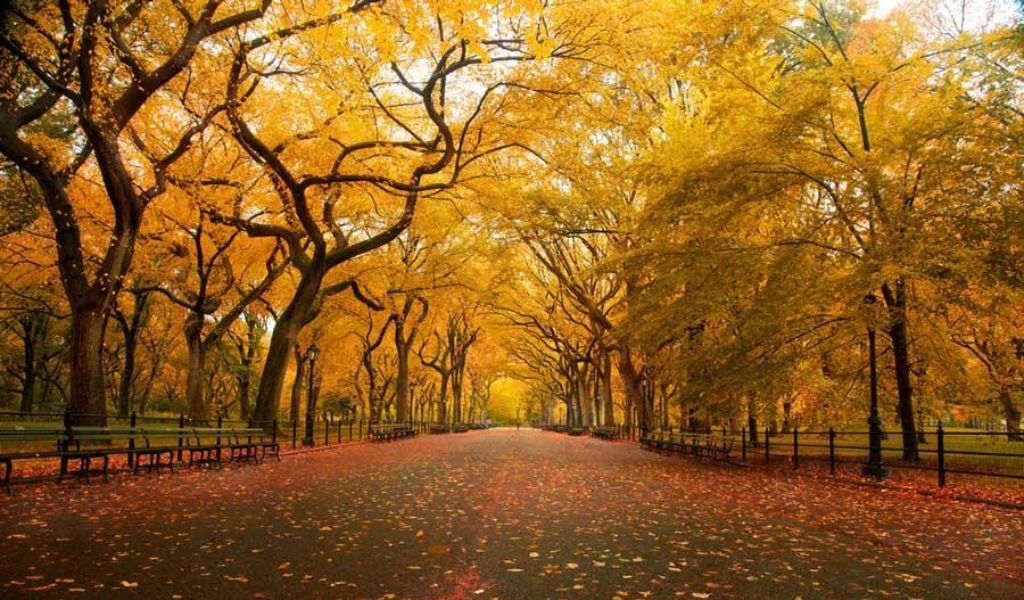
Only grows in the eastern parts of North America, the American Elm is versatile in its ability to thrive in various soil conditions, from wet riverbanks to drier upland areas. In its natural habitat, it can soar to 60 to 80 feet or even taller. Its iconic “vase” or “fountain” shape has become a beloved feature in urban avenues and parks.
Camperdown Elm (Ulmus glabra ‘Camperdownii’)
The Camperdown Elm, also known as Ulmus glabra ‘Camperdownii,’ is a beautiful deciduous tree known for its weeping habit and distinct, twisted branches. Unlike its towering relatives, this tree is notably smaller and more suitable for private garden settings.
With a drooping and twisted branching structure, the Camperdown Elm creates an umbrella-like canopy, providing shade and visual appeal. Its leaves are large, dark green, and doubly serrated. In summer, the tree will bloom reddish-green flowers that give way to winged seeds, known as samaras.
This unique elm is a grafted tree, with the top portion being Camperdown Elm and the bottom usually being a species of a more upright elm for support. Typically, the tree grows to 15 to 25 feet, making it a lovely specimen tree in gardens and smaller landscapes.
Cedar Elm (Ulmus crassifolia)
Cedar Elm has leaves that feel rough, which is why it’s sometimes called the “rough-leaf elm.” These leaves turn a beautiful yellow or gold color in the fall. During late summer, the tree has tiny green flowers, which later turn into small, round seeds.
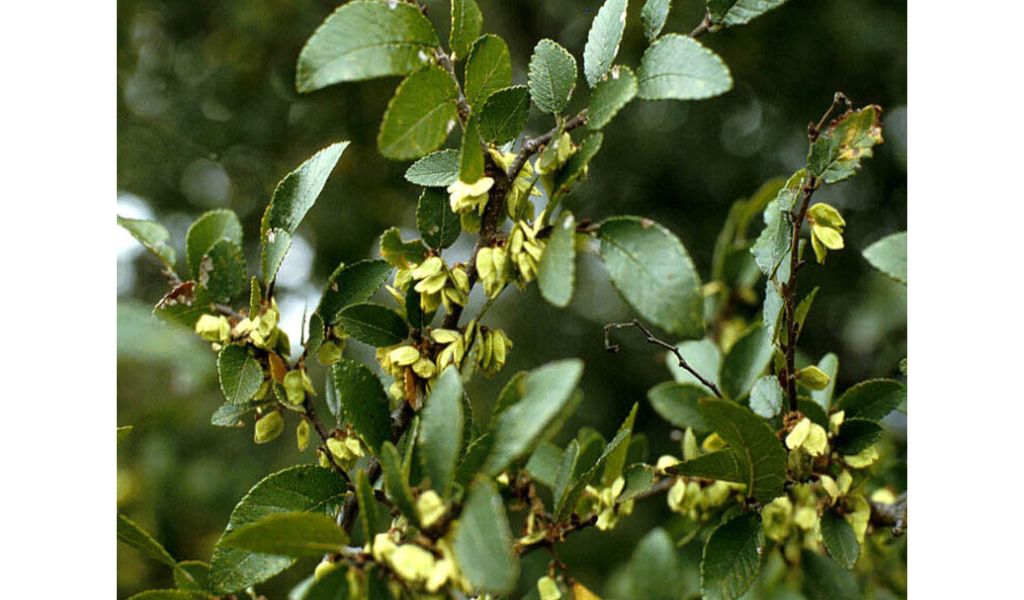
You can find Cedar Elm mainly in the southern U.S., from Texas to Florida. It can grow in different kinds of soil, even in places that get flooded sometimes. This species is medium to tall, growing as tall as a four-story building.
People appreciate the Cedar Elm because it’s strong and can handle hot summers. It provides good shade, and its golden leaves in the fall make it a pretty tree. We also use the wood from this tree for different things, like making furniture.
Cherry-Bark Elm (Ulmus villosa)
The Cherry-Bark Elm is a tree known for its bark that looks like cherry tree bark. It’s not as common as other elm trees but a unique beauty. This elm also has fuzzy leaves, sometimes called the “hairy elm.” In the fall, the leaves change to a lovely mix of yellow and red.
This Cherry-Bark Elm is originally from some parts of Asia, like the Himalayas and Bhutan. It likes places that have a bit of moisture, like riverbanks or wetlands. It can grow tall, almost as high as a five-story building.
David Elm (Ulmus davidiana)
The following species we want to introduce is the David Elm, a tree that is not as famous as some other elms, but it’s still special. David Elm has leaves that are bright green and somewhat shiny. In the fall, they change to a mix of yellow and purple, which looks pretty.
One great thing about this tree is its bark: it’s light gray and peels away in patches, giving it an impressive look.
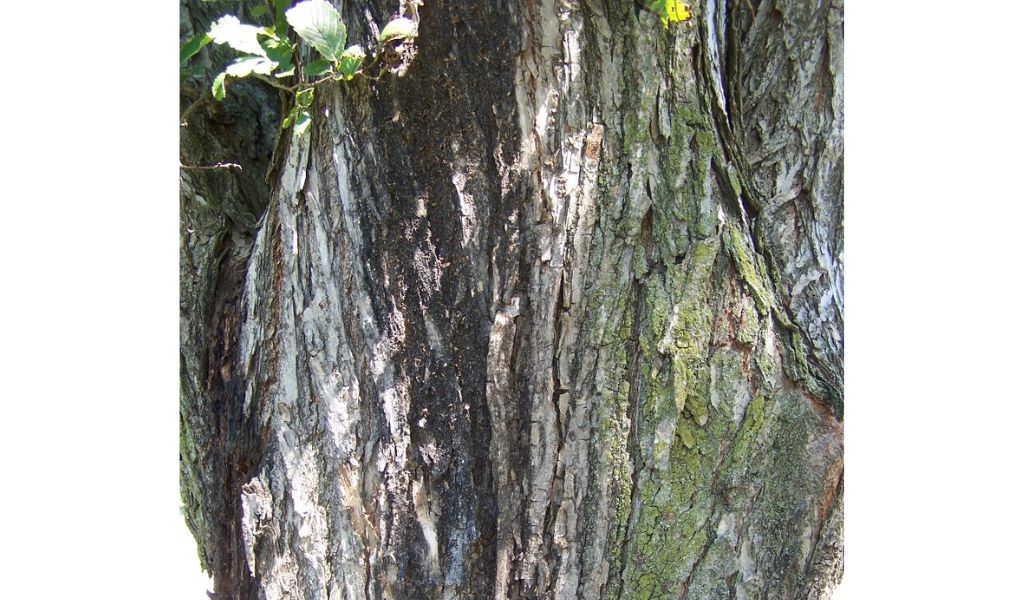
You can find the David Elm mainly in parts of Asia, like China and Korea. These regions have cool climates with mountainous areas full of Devid elm trees. The tree may grow to be about as tall as a three-story building.
English Elm (Ulmus procera)
The English Elm is a famous tree that many people recognize. It was very common in England, but a disease affected most of them. Still, many value it for its rich history and impressive look.
You will love the English Elm once you see its grand appearance with many branches spreading wide. Its leaves are bright green and have a slightly rough texture. An interesting thing about this tree is that it has tiny flowers in the spring before the leaves appear. These flowers later turn into tiny, flat seeds.
The English Elm has been a part of many stories and poems. Its large size and beautiful shape make it a favorite for parks and big gardens. Finally, the wood from this tree has also been used for making furniture and even ship parts in the past.
European White Elm (Ulmus laevis)
The European White Elm is an elegant tree that stands out, especially near rivers and wet areas in Europe. It has smooth bark that’s light gray or white, where it gets its name. Its leaves are bright green, turning a golden yellow in the fall. Like other famous elms, its seeds have the typical “wing” around them.
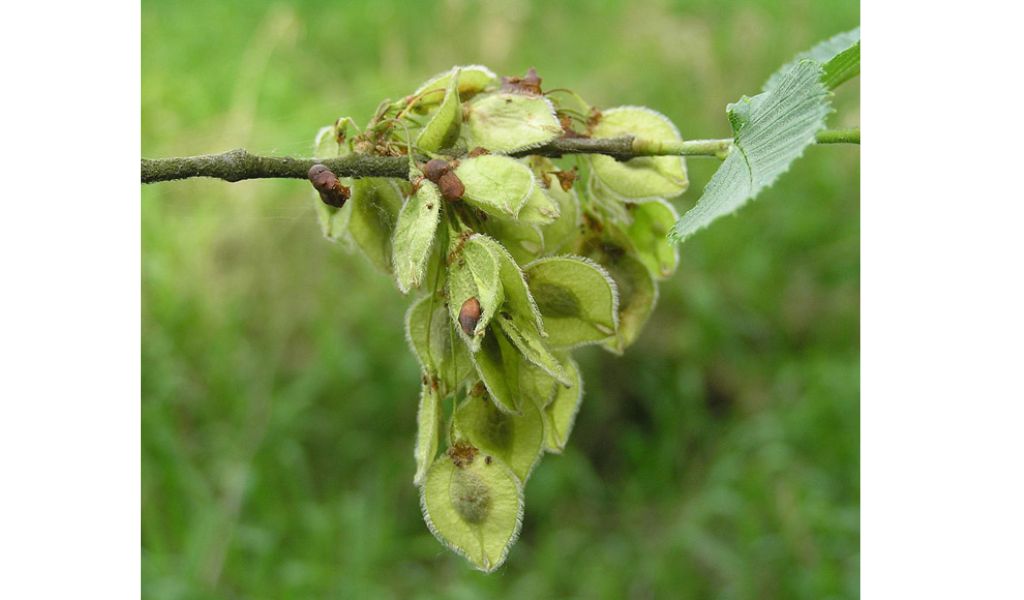
This Elm is native to parts of Europe and often grows near rivers, lakes, and other wet areas. It’s a tall tree that may reach heights similar to a five-story building, making it an impressive sight in natural landscapes.
People appreciate the European White Elm for its graceful look, especially when reflected in the water. Its ability to grow in wet conditions makes it a favorite for planting near water bodies. Moreover, the tree is thorny and easily handle challenging environments, making it a popular choice for urban areas.
Siberian Elm (Ulmus pumila)
The Siberian Elm is a deciduous tree from the colder regions of Asia. Despite its toughness, it’s often viewed with mixed feelings because it spreads quickly and sometimes takes over areas.
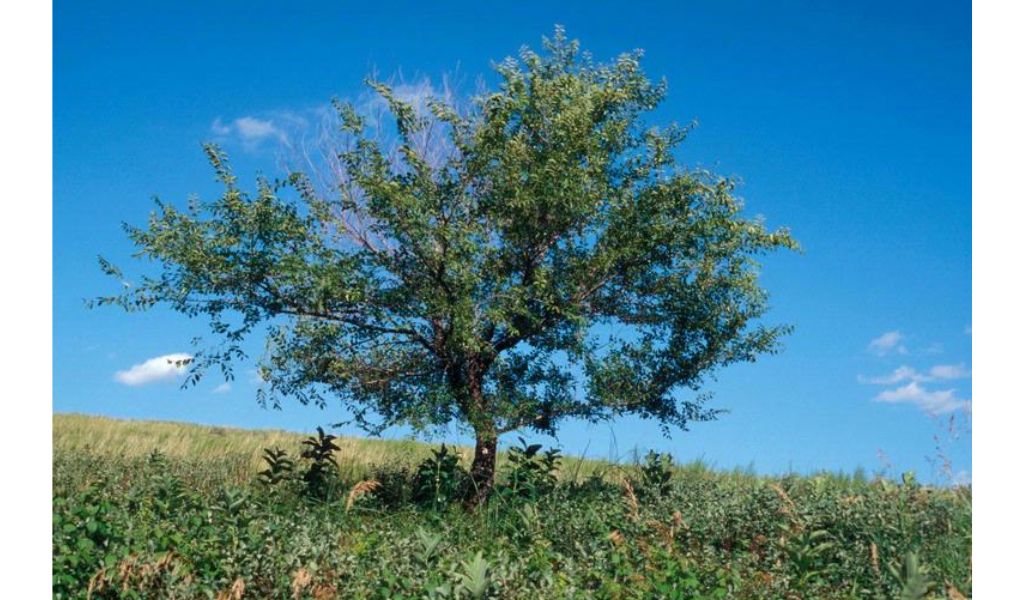
Siberian Elm impresses with its fast growth and ability to survive in harsh conditions. It has small, shiny green leaves that can resist strong winds. Because of its adaptability, it has grown in many parts of the world, including the U.S.
Slippery Elm (Ulmus rubra)
Finally, the Slippery Elm is a unique tree, mainly known for the special inner bark that has been used for various purposes, including natural remedies. It’s native to North America and has a rich history with indigenous peoples.
The tree leaves are dark green and have a slightly rough texture. It thrives in moist woodlands and near streams, growing to the height of a three- to four-story building.
People have appreciated the Slippery Elm for centuries due to its medicinal bark. Today, it’s still an ingredient to make herbal teas and supplements. Besides its medicinal properties, the tree’s wood is also beneficial for making different items, such as furniture and tools.
See more: What side of the tree does moss grow?
Uses of Elm Trees
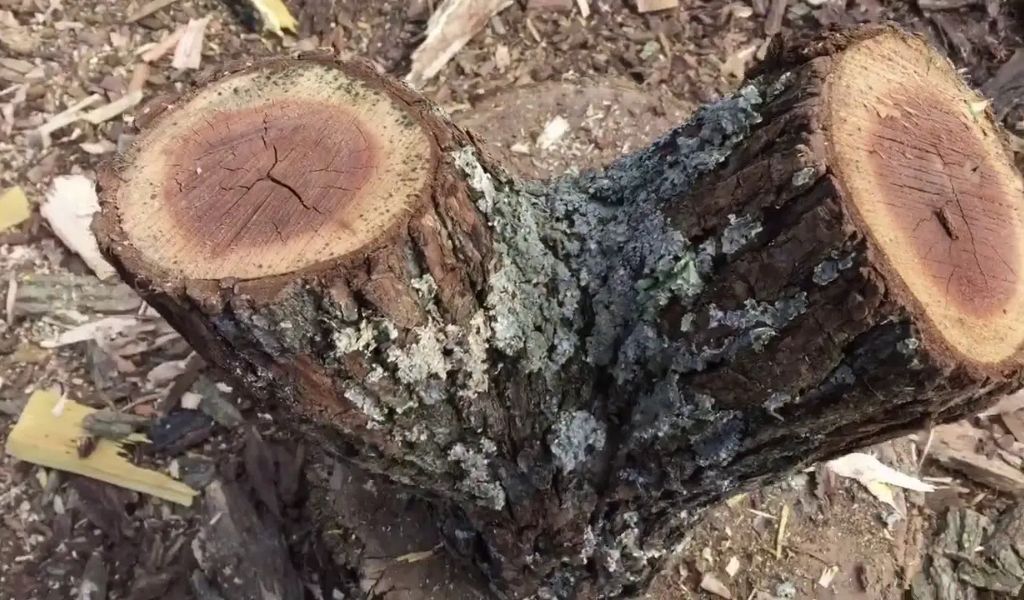
Knowing: is an elm tree an evergreen? is crucial when using elm trees for your landscape plan. Now, it’s time to dive further into these species. Elm trees have many uses and benefits, both for humans and for the environment. Some of the uses of elm trees are:
- Shade: Elm trees provide shade and cooling for people, animals, and buildings. They also reduce the urban heat island effect and lower the energy consumption for air conditioning.
- Timber: Elm wood is strong, durable, and resistant to rot and splitting. People use it to make furniture, flooring, doors, windows, boats, barrels, musical instruments, etc.
- Medicine: Elm bark and leaves have medicinal properties and are used for treating various ailments. The bark is also a source of mucilage, which is a thickener and stabilizer in food, cosmetics, and pharmaceuticals.
- Ornament: Like eucalyptus, elm trees have beautiful foliage, flowers, and bark and can create stunning landscapes. People also use them for bonsai, hedges, and topiary.
- Wildlife: They provide food and shelter for various wildlife. Also, they support biodiversity and ecosystem services, such as pollination, seed dispersal, and soil improvement.
FAQs
Which areas of the world are elms usually found in?
Elms usually grow in temperate and subtropical regions, especially in Europe, Asia, and North America. They expand in various habitats, such as forests, woodlands, grasslands, wetlands, and urban areas. These species can also adapt to different soil types, moisture, and pH levels.
Is an elm tree a conifer?
No, an elm tree is not a conifer. A conifer is a type of tree that produces cones and needle-like leaves. Examples of conifers are pine, spruce, fir, and cedar. In fact, elm trees produce flowers and broad leaves.
How to tell if your elm is suffering from Dutch elm disease?
Dutch elm disease is a fungal disease that affects elm trees and causes them to wilt and die. The disease is spread by elm bark beetles that carry the fungus from infected trees to healthy ones.

The fungus blocks the water-conducting vessels of the tree, causing the leaves to turn yellow, brown, or wilted. The branches may also die back, creating a flagging effect. Further, the bark may show signs of infection, such as streaks, cankers, or holes.
If you suspect your elm suffers from Dutch elm disease, contact a certified arborist or a local extension office for diagnosis and treatment. Remove and dispose of any infected or dead branches or trees. Finally, avoid wounding or pruning healthy elms during the beetle-flight season. By taking these steps, you are protecting and preserving these beautiful and valuable trees for the future.

